Asus ROG Zephyrus M GU502GU detailed review
When it rains, it pours. This is an adage that has generally been true of Asus launches at Computex in the past and it’s not about to change anytime soon. The Taiwanese electronics manufacturer had a long list of laptop models to announce at Computex 2019 in Taipei. The list included a refreshed range of ZenBook and VivoBook models and the ScreenPad Plus-equipped ZenBook Duo/Pro Duo. The list also included a freshly designed batch of ROG gaming laptops, one of which was the Zephyrus M GU502.
At first glance, it’s easy to tell that the Zephyrus M design has matured quite a bit. The Zephyrus M GU502 is lighter, more compact, and even a bit more subdued in appearance. But that’s probably because the lighting and cooling systems are somewhat low-key on the laptop. Our review unit was the GU502GU variant. It was powered by an Intel 9th Gen Core i7 CPU, an Nvidia GeForce GTX 1660 Ti graphics card, and 16GB of RAM along with 512GB of solid-state storage. This being the first laptop to enter our test lab with a 9th Gen Intel chip, we were eager to have a go on it. Read on to see how the new “Zephy” performed.
Build and Design
The Zephyrus M GU502 measures 18.9 millimetres in height and weighs 1.9 kilogrammes, which, according to Asus, is 25 percent thinner and 45 percent lighter than typical 15-inch laptops. In my experience, I felt the Zephyrus M GU502 was about the same size and weight as any other 15.6-inch model but weighed surprisingly less for a gaming laptop. Picking the laptop up with one hand and moving from one bedroom to another was an unexpectedly easy affair. The brushed metallic lid offered sufficient grip too.
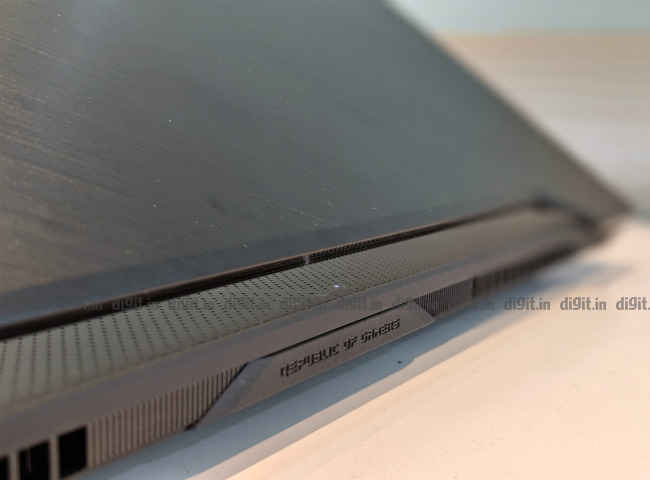
The base panel stays put on this Zephyrus M
According to Asus, the exterior of the Zephyrus M GU502's uses a die-cast magnesium alloy. The top cover, which, despite displaying some signs of flex, is ruggedly built and hard-wearing. The area around the keyboard uses a soft-touch paint that's similar to the material Dell uses in some of its G-series gaming laptops. The effect it creates is pleasing; the palm rest is comfortable enough for many hours of keyboard use. In the hands, the laptop looks understated yet bold. It doesn't scream out loud with bright colours and lights but it also doesn't look lost in a collection of mainstream laptops.
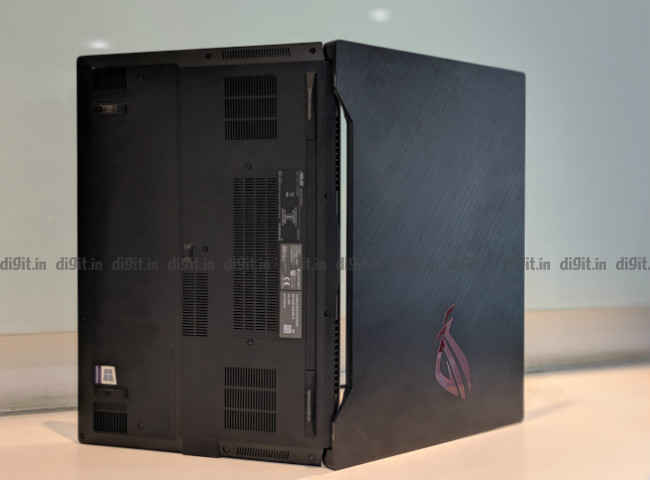
It weighs 1.9 kilogrammes
The biggest visual change in this year's Zephyrus M is of course the design of the base panel. With the GU502 not employing Asus' Active Aerodynamic System, the base panel remains fixed, unlike previous models in which the base panel opened up along with the display hinge to provide an additional stream of cool air. All things considered, the GU502 is probably the most mature-looking Zephyrus M yet, and that's not a bad thing at all. I personally like the way the new Zephy looks and feels in the hands. If you're holding the Zephyrus M GU502 with your eyes shut, it's hard to tell without looking that it's a gaming laptop. To you, it should feel like any other 15.6-incher with sharper edges.
Display, Audio, and IO
The Zephyrus M GU502 features a 15.6-inch IPS LCD screen with a Full HD resolution, 3ms response time, and 144Hz refresh rate. The matte finish keeps the screen free of glare, which can easily distract anyone who is either working or gaming. The PANTONE-validated display of the laptop appeared bright and colourful while watching movies, browsing on the web, and playing games. Colours appeared neither too saturated nor too washed out. The maximum brightness appeared to be sufficient for most well-lit areas. In summary, the display on the Zephy is more than adequate for all types of content consumption.
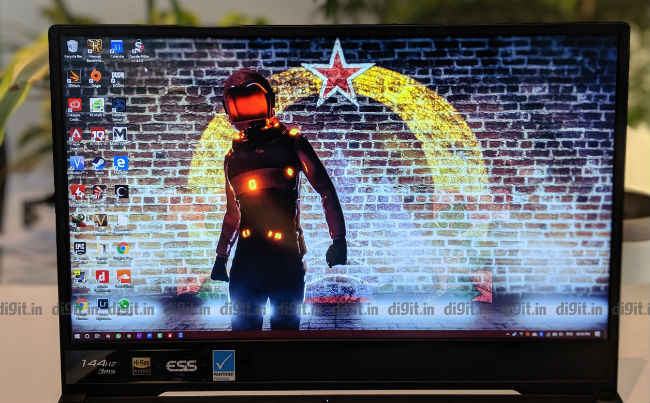
Sound from the two down-firing speakers of the Zephyrus M GU502 is loud but tinny. Songs like Aerials by System of a Down and Starboy by The Weeknd sound harsh on the ears because highs (and sometimes mids as well) are overly pronounced. Lows, on the other hand, are neither heard nor felt from the laptop's speakers. If you're a serious gamer, it makes more sense for you to buy a pair of headphones or 2.1 PC speakers than rely on the units offered on the Zephyrus M GU502 for full sound.
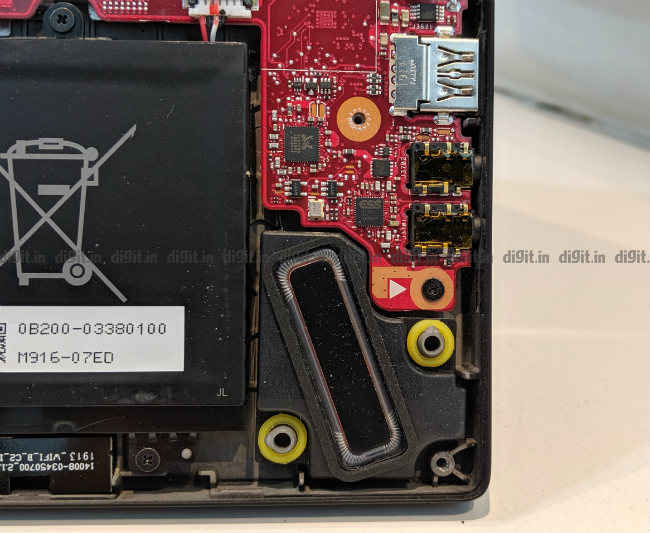
The Zephyrus M GU502 comes with a wide range of ports for connectivity. On the left, there's a proprietary round-pin power port for charging, a LAN port, a full-size HDMI port, a USB-A 3.1 Gen 2 port, and two separate 3.5mm audio jacks for headphones and a microphone. On the right, there are two USB-A 3.1 ports and a USB-C 3.1 Gen 2 port, which incorporates DisplayPort 1.4 and features PD charging using a suitable power bank. The right side also features a Kensington lock slot for added security. Sadly, the Zephyrus M GU502 does not come with a fingerprint scanner for faster sign-ins.
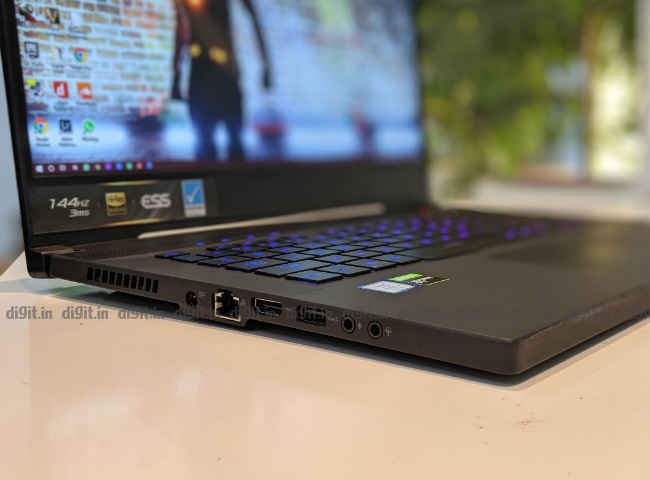
Ports on the left
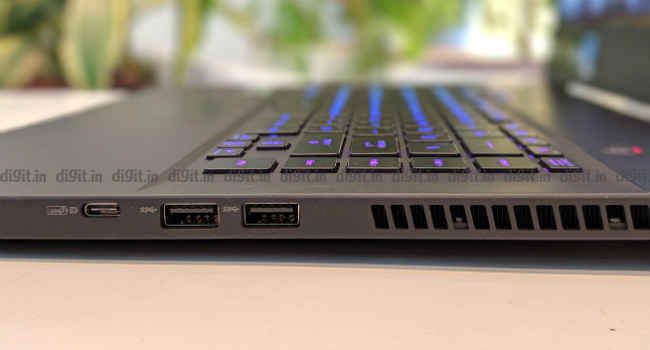
Ports on the right
Keyboard and Touchpad
The keyboard has got to be the Zephyrus M GU502's most finely engineered element. The keys on this gaming laptop have just the right amount of spacing, travel, and resistance. Typing long documents and emails on the RGB backlit unit is a breeze. I particularly like that it has dedicated keys for Home, End, Page Up, and Page Down functions, which are very useful for text manipulation. In addition, there are four dedicated shortcut keys for controlling the volume, muting the microphone, and launching Asus' proprietary ARMOURY CRATE app for lighting customisation and performance management.
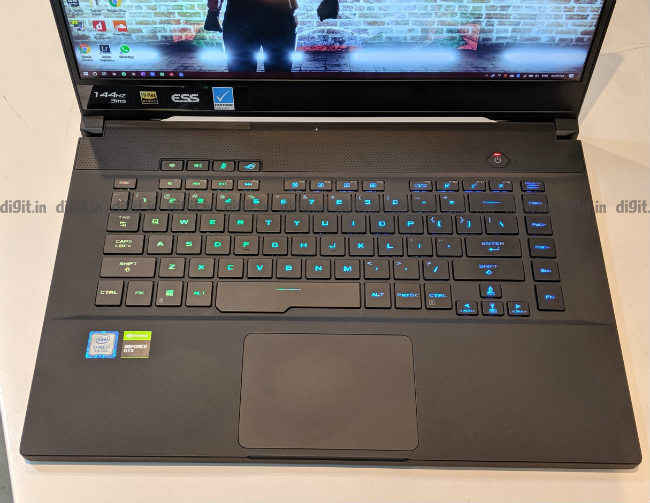
The keyboard on the Zephyrus M GU502 features per-key RGB lighting customisation through the bundled ARMOURY CRATE app, which means you can play mix and match with the various colour and lighting options that the app offers. Examples of the lighting patterns available are Static, Strobing, Rainbow, Breathing, and Music. The lighting pattern on the keyboard can also be switched using the Fn and side arrow keys. My personal favourite is the Smart mode, which colours the keyboard either green, yellow, or red, depending on the temperature of the CPU package. In summary, the Zephyrus M GU502 has one of the best keyboard units ever made by Asus in recent times.
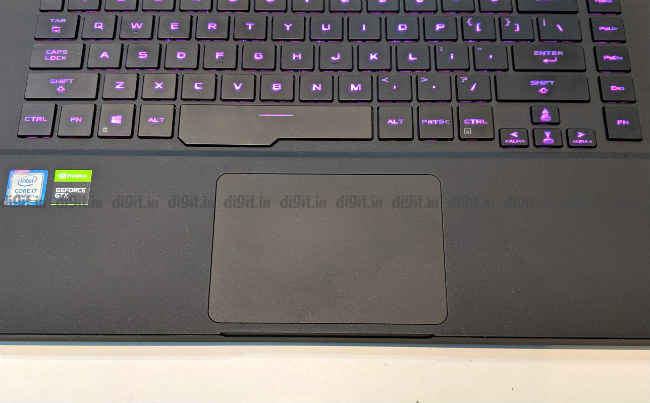
The Zephyrus M GU502's finely engineered keyboard is complemented by an equally finely engineered touchpad. Windows recognises it as a precision unit, which means all the settings regarding multi-finger taps and swipes can be modified within Windows Settings. No third-party drivers or utilities are needed to make the best of it. The touchpad is easy to use for everyday mouse pointer operations, such as clicking, double-clicking, swiping, and dragging.
Performance
The review unit we received came with an Intel Core i7-9750H CPU with 16GB of RAM and an Nvidia GeForce GTX 1660 Ti graphics card with 6GB of video memory. Storage was taken care of by a single Intel 660p PCIe NVMe solid-state drive with 512GB of space. This is the first laptop in our test lab to feature an Intel 9th Gen Core series CPU. I must say that it was a pleasant surprise to open the laptop up for the first time and find a “9th Gen” sticker on the inside. It's clear that Asus wants to be one of the first manufacturers to bring Intel's newest chips to India. As you can tell, the Zephyrus M GU502 sports not an Intel U-Series CPU but an H-Series unit, which, according to Intel, represents high performance graphics.
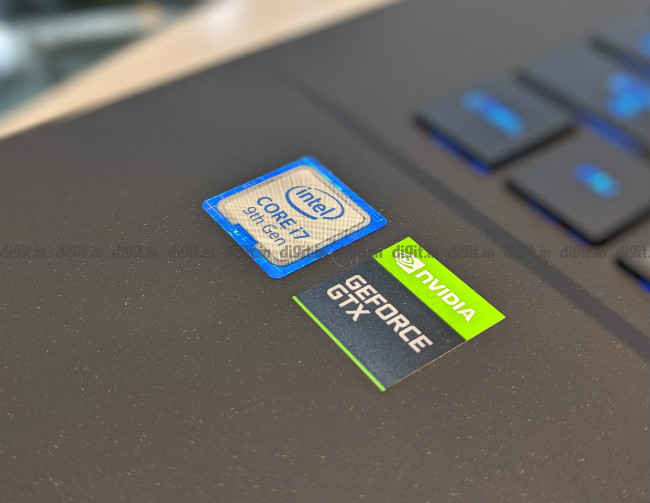
On our CPU benchmark tests, the review unit performed more or less respectaly. On PCMark 8's Conventional Creative test, the Zephy scored 3952. In comparison, the Dell G7 and Asus ROG Zephyrus S GX531 scored 3925 and 2878 in the same test respectively. On GPU benchmark tests, the review unit didn't do so well. On 3DMark's Fire Strike Ultra, the Zephy scored 3005. In comparison, the Dell G7 and Asus ROG Zephyrus S GX531 bagged 3085 and 4471 in the same two tests respectively. On 3DMark's Sky Diver, however, the Zephy scored 28805. In comparison, the Dell G7 and Asus ROG Zephyrus S GX531 got 31687 and 33918 in the same two tests respectively.
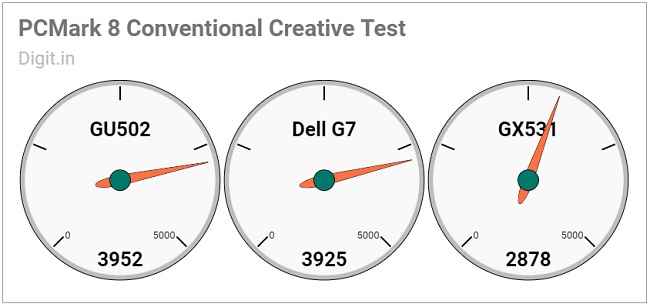
Everyday performance of the review unit was faultless. I was able to multitask on numerous applications, such as Chrome, File Explorer, Adobe Lightroom CC, and Microsoft Store simultaneously across multiple virtual desktops. The fact that I was downloading games and updating drivers in the background made little difference to the overall speed, which is good news. Bringing up Task View in Windows 10 multiple times successively did not result in any lag or stuttering in the animation. Intel's new 9th Gen chip does not fail to impress.
Gaming
Gaming was mostly a pleasant experience on the review unit. Most of the titles from our test battery ran at an average frame rate of over 60 frames per second without any signs of lag or stuttering. Now, I should let you know that we at Digit use two terms to describe the graphics setting in any game for a laptop of this price: Ultra, which refers to the highest setting possible in any game, and High, which refers to the second highest setting possible in any game. Metro Exodus is of course the only exception because it has one level above what we refer to as Ultra called Extreme. We tested all our games in the laptop's native resolution of 1920 x 1080 pixels.
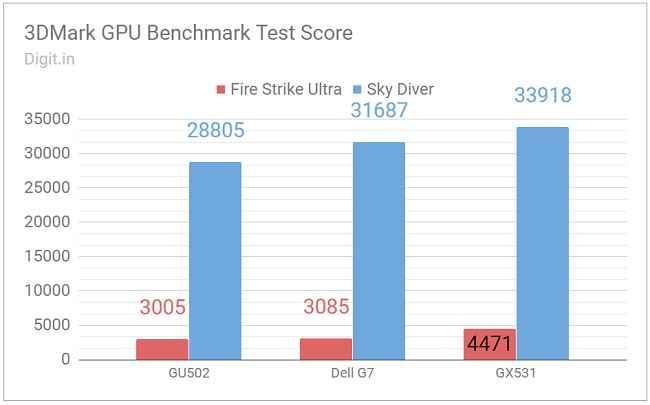
Apex Legends clocked the highest as it ran on Ultra at an average frame rate of 89 frames per second. Turning it down to High bumped the average frame rate up to 97 frames per second. Doom was a close second at 89 frames per second on Ultra and 93 frames per second on High. Crysis 3 ran on Ultra at an average frame rate of 70 frames per second but jumped to 99 frames per second when the setting was lowered to High. Shadow of the Tomb Raider and Hellblade: Senua's Sacrifice ran on Ultra at an average frame rate of 57 and 54 frames per second respectively but picked up the pace by about 10 frames extra when the setting was brought down to High. In a similar test, Battlefield V jumped from an average frame rate of 45 frames per second to 52 frames per second.
Interestingly, Metro Exodus ran at an average frame rate of 74 frames per second on both Ultra and High with a maximum difference of a couple of frames. However, in its unique Extreme setting, the game ran at an average frame rate of 43 frames per second, which is a huge dive down the scale. “The developers [of Metro Exodus] themselves say that this setting has no discernable difference in terms of the visuals but does tax the system,” writes my colleague Swapnil in his piece on the Nvidia GeForce RTX 2070 Super.
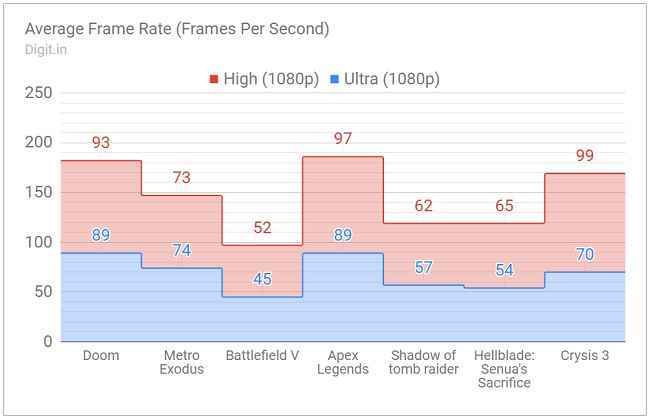
While the aforementioned games ran mostly smoothly at any given setting without any noticeable stutters or lags, they taxed the powertrain inside enough to send the mercury soaring up to figures above 70 degrees Celsius. Even in an air-conditioned cabin where the room temperature was about 24 degrees Celsius, the heat from the vents on the sides of the laptop could be easily felt. The average temperature we recorded around the rear vents was 73 degrees Celsius. The average temperature around the WASD keys was 46 degrees Celsius. In a slightly warmer environment, it was hard even to rest the mouse hand within 15 centimetres of the laptop. On the bright side, the heat wasn't passing through the keys on the keyboard, especially the all-important WASD keys. Most of the heat was felt in the area around the keyboard.
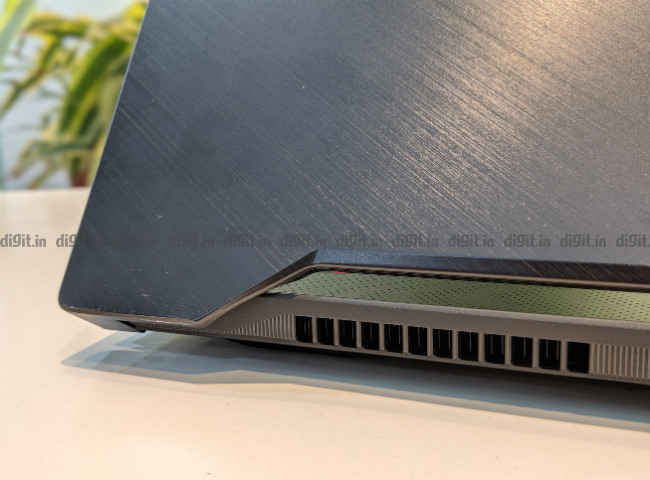
Vent area gets quite hot while gaming
Though it's characteristic of gaming laptops to have noisy, fast-spinning fans when the CPU and GPU are maxed out, I found the fan noise on the review unit to be exceptionally high. In the office, at least four colleagues who have used various types of laptops in the past remarked that they hadn't heard laptop fans quite as noisy as the ones on the Zephyrus M GU502. When the fan mode was switched from Balanced to Turbo, the noise grew higher still. Though the maximum of 81 dB that we recorded in a quiet conference room seems reasonable while gaming with headphones on, it could easily be a source of distraction for say, the attendees of a meeting. This is where the Silent mode really comes in handy.
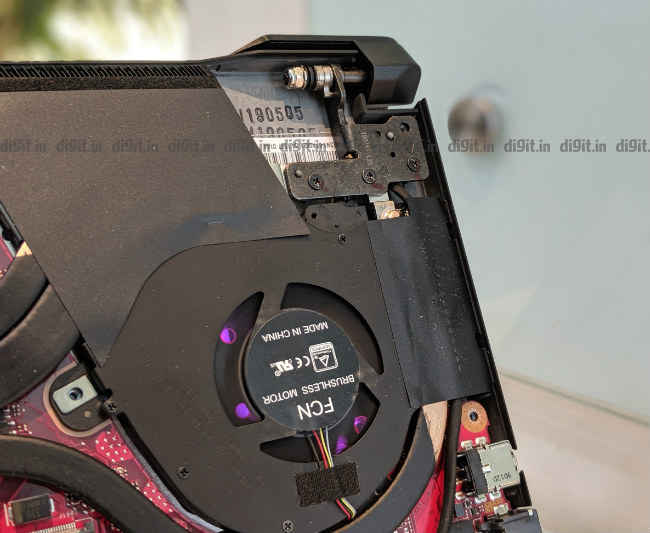
You can see the keyboard backlighting through the fan
Upgradeability
Unscrewing all of the fifteen marked Frearson screws on the GU502’s back panel and taking the cover off reveals a red Asus motherboard covering two-thirds of the cavity. The laptop’s 76Wh battery occupies what space is left below, along with the two speakers and their rubber housing. It becomes instantly clear that the 16GB RAM that comes with the device is soldered to the motherboard, leaving the user to play around with one empty RAM slot. Since the maximum RAM capacity is 32GB, you can only install a maximum additional RAM of 16GB.
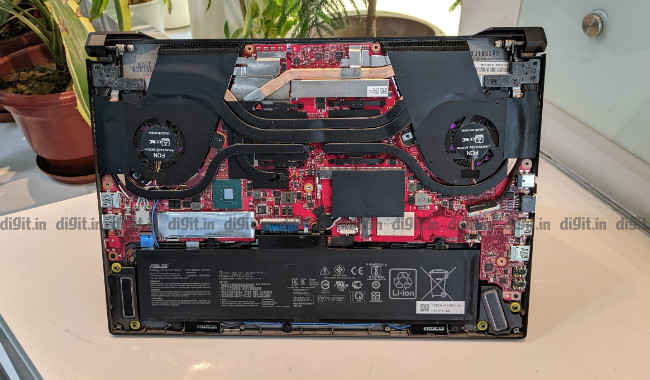
Do not try this at home

You get one empty RAM slot
While there’s no empty hard drive caddy inside, there is space for an extra PCIe NVMe solid-state drive chip. This means you’ll have to shell out more money if you want more space than what the installed chip offers. The installed Intel 660p 512GB chip sits inside a protective jacket that keeps the chip cool and clean. Though this laptop has some scope for easy upgrades, we recommend you take it to an authorised Asus service centre to have any new chip installed.
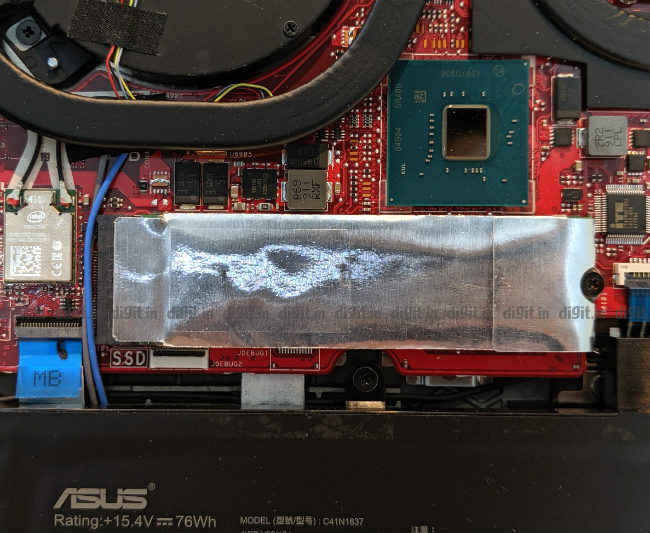
Installed SSD gets a jacket to keep it cool and clean
Battery
The Zephyrus M GU502 ships with a 76Wh lithium-ion polymer battery, which Asus claims lasts six hours on a single charge. On our standard battery benchmark test, the review unit lasted 2 hours, 22 minutes, which is the lowest score we have seen from a gaming laptop in the past. In everyday scenarios, the review unit lost close to 40 percent of its charge in about an hour's time. During the tests, Wi-Fi and Bluetooth were turned on and the screen brightness was set to 75 percent. During the tests, I multitasked on Chrome, File Explorer, and other everyday applications.
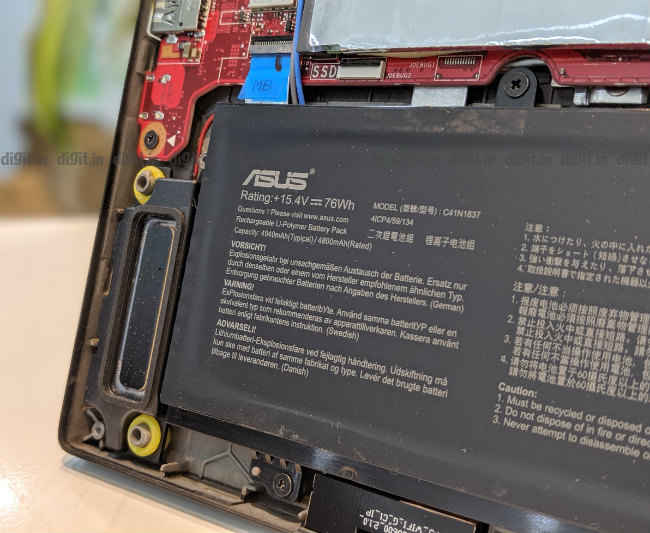
When I played a TV show on Hotstar using Chrome at full screen brightness with the audio routed through a pair of headphones, the battery fell from 58 percent to 43 percent in just twenty minutes. Charging the laptop from near zero back to full took close to two full hours. In summary, the Zephyrus M GU502 is not the machine to go for if you're planning to spend time away from the wall socket. The powertrain inside, including Intel's H-Series CPU, does not go easy on the laptop's cells. Even for a gaming laptop, the Zephy scores very badly in the battery department.
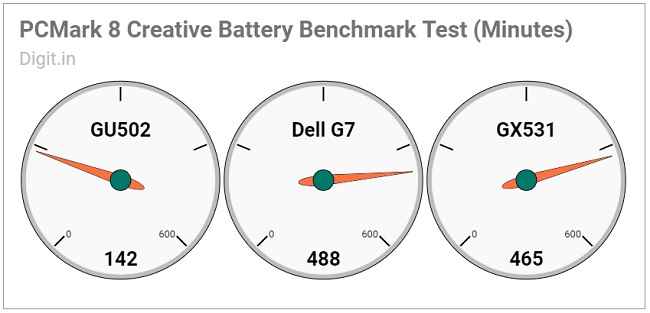
Bottom Line
The Asus ROG Zephyrus M GU502 is for you if you're seeking a new 15.6-inch laptop that's both capable and portable. Whether it's performing bulk image exports on Adobe Lightroom or playing the newest iteration of the rebooted Tomb Raider video game series, Asus' new Zephy is at home. What's more, it's one of the first few laptops in the country to sport an “Intel 9th Gen” sticker, which gives proud early birds another reason to show off.
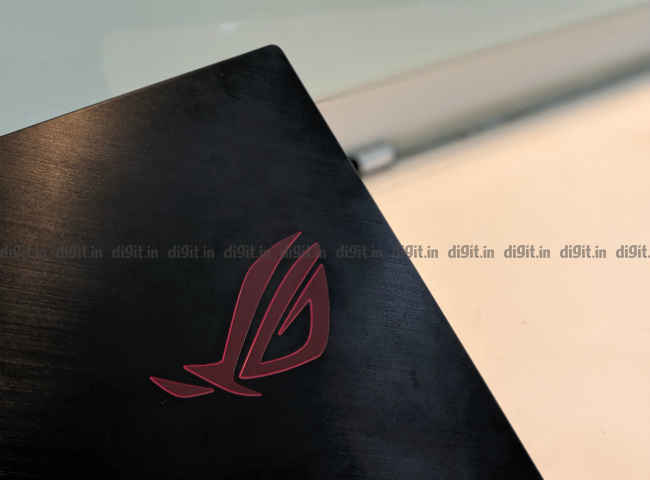
The new Zephyrus M GU502 is one of the lightest gaming laptops we have seen in the Digit Test Lab but it's also one of the hottest and noisiest. If you're a serious gamer who wants portability, you might want to explore options that give you a ray tracing-enabled Nvidia GPU option in and around the same price bracket along with a lot less heat and noise. You could consider the ROG Strix Scar II GL504, MSI GL63, and Dell G7 7590. That said, you can't go wrong with the new Zephy.

 2 years ago
80
2 years ago
80

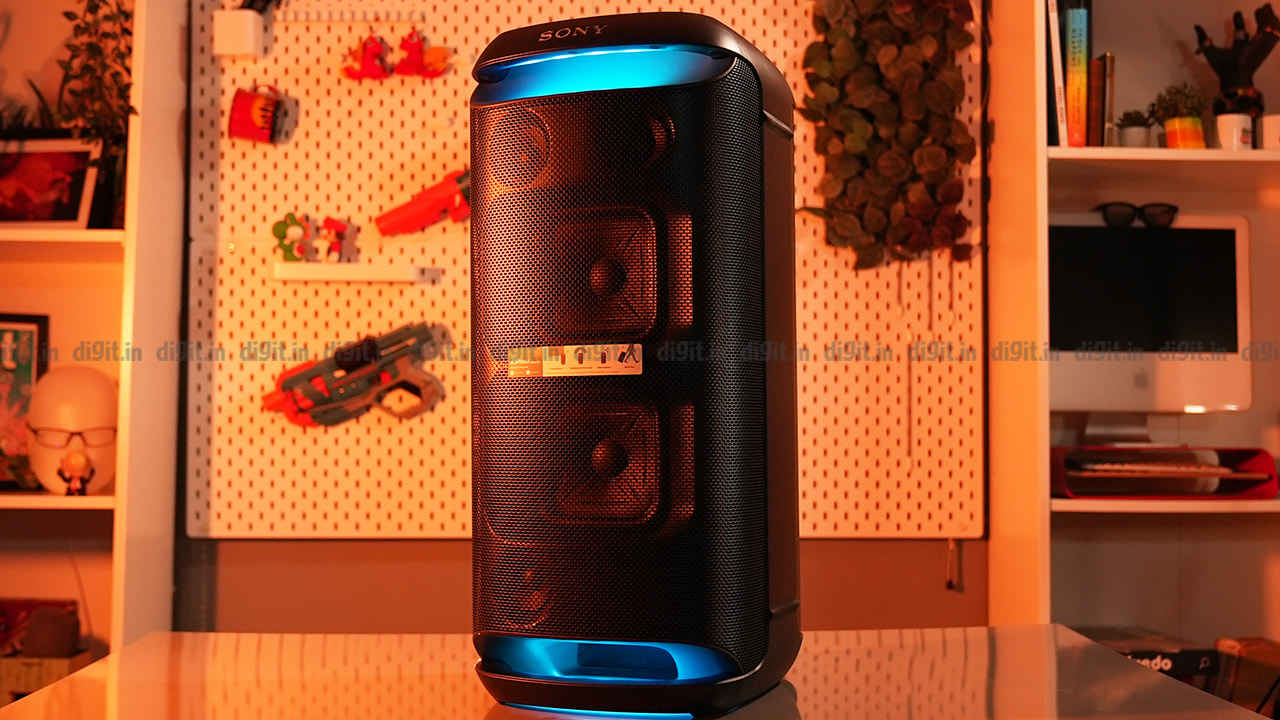
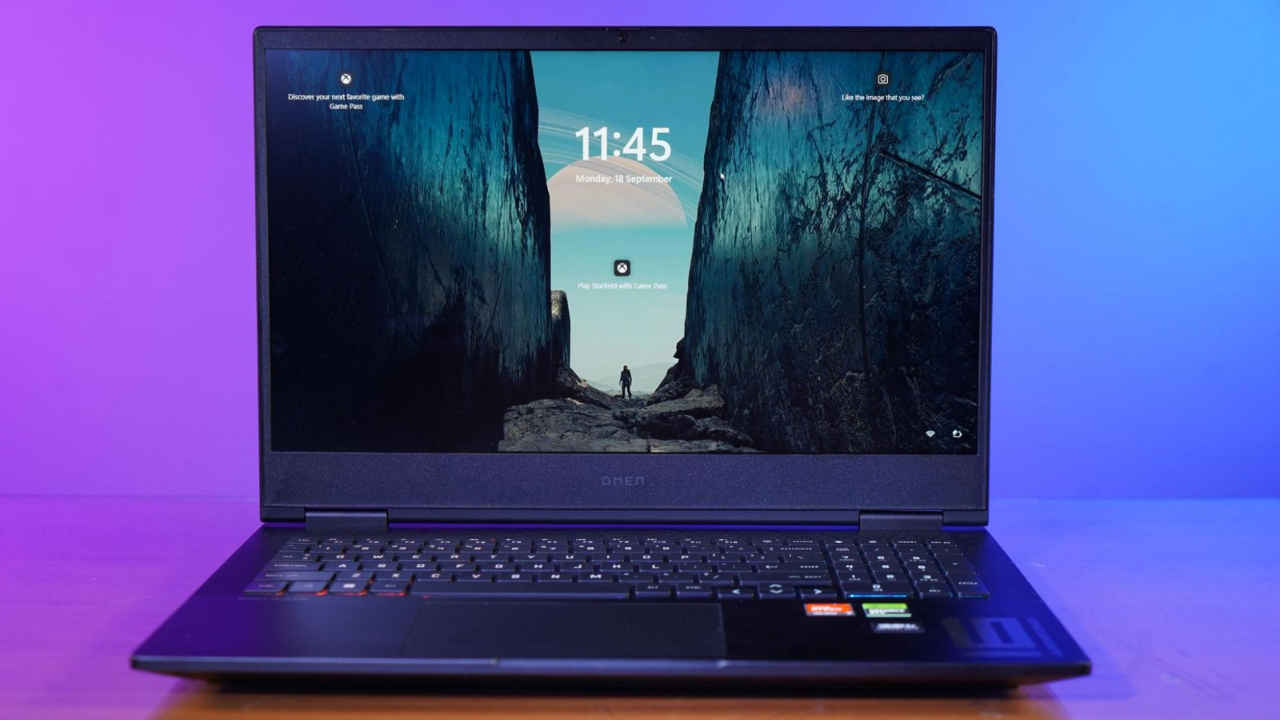





 English (US)
English (US)